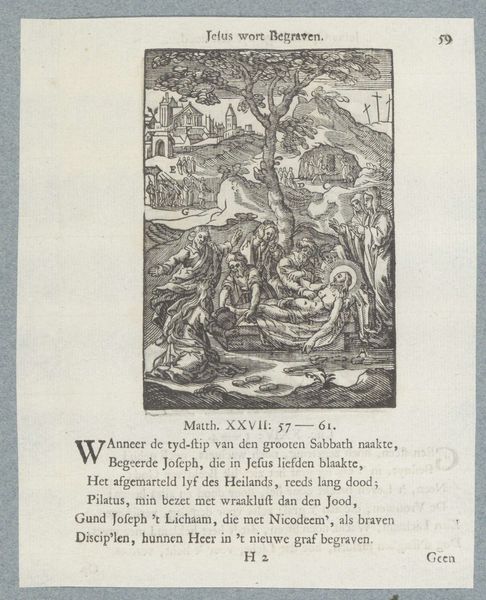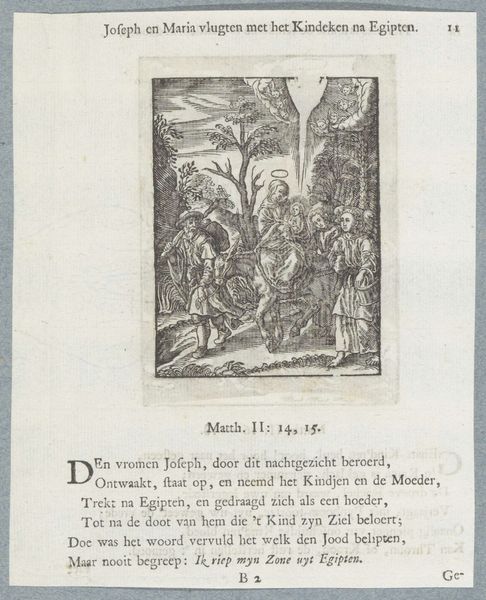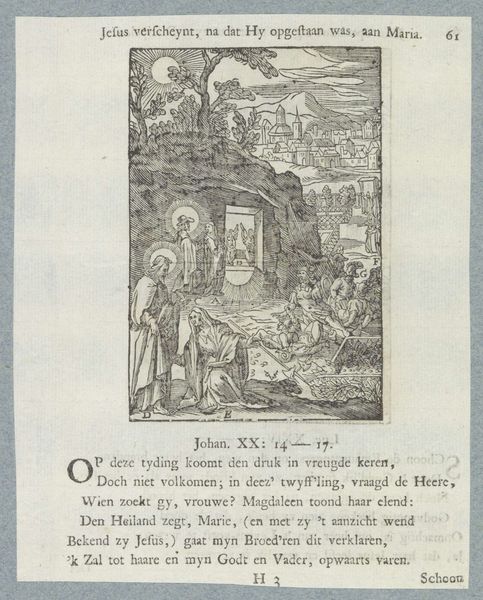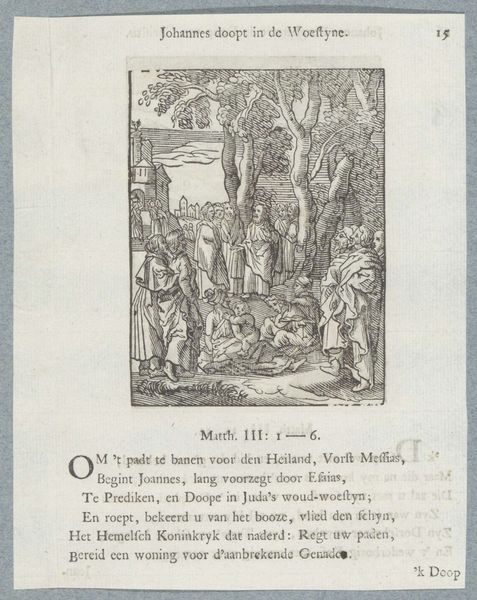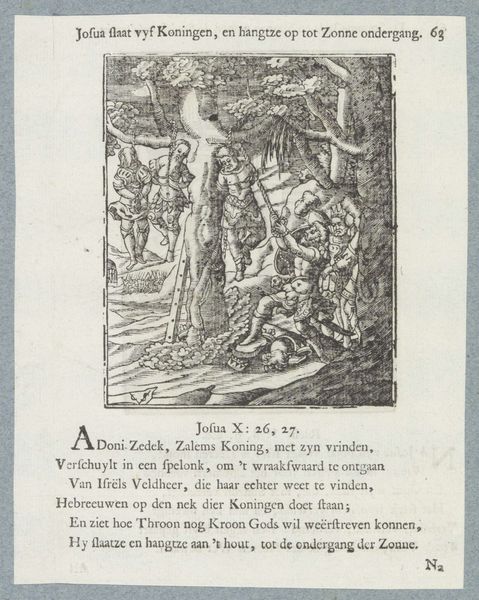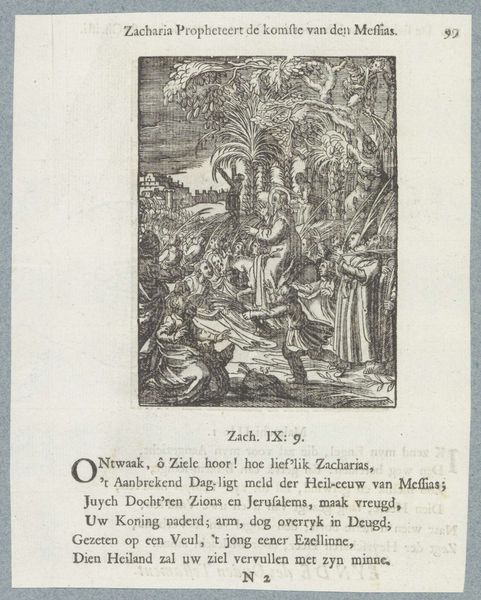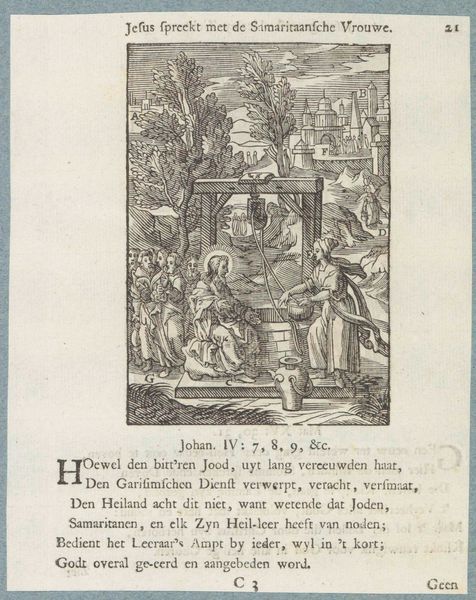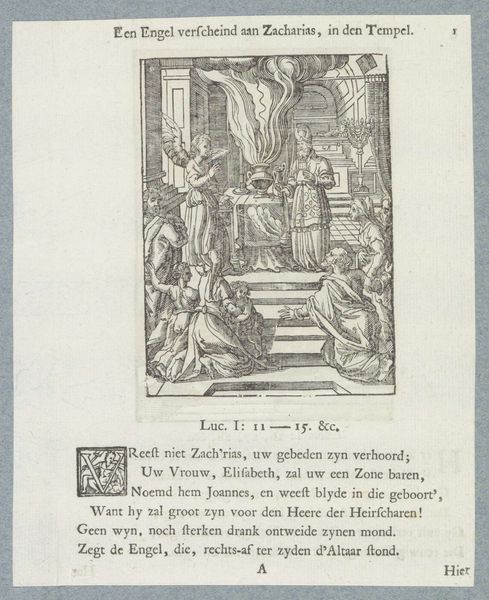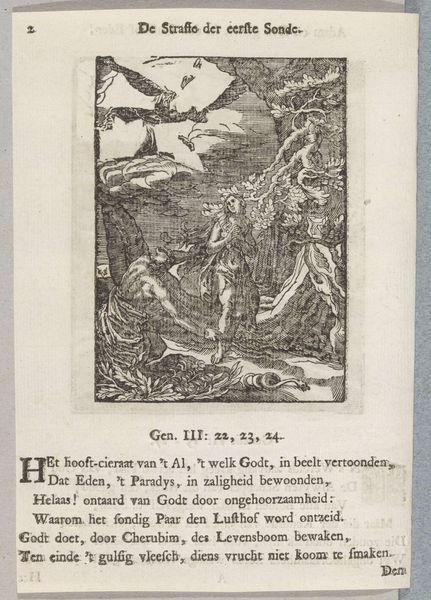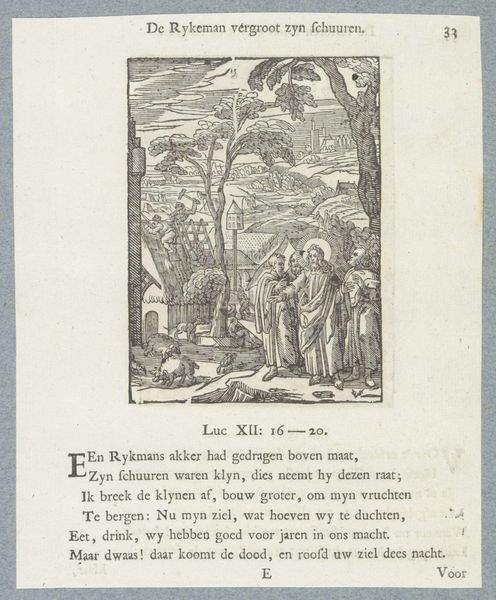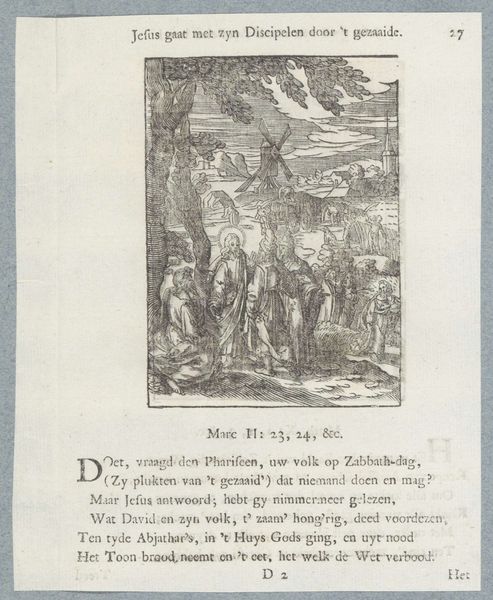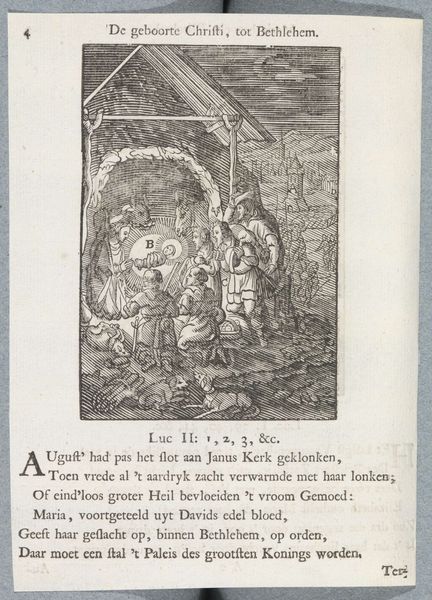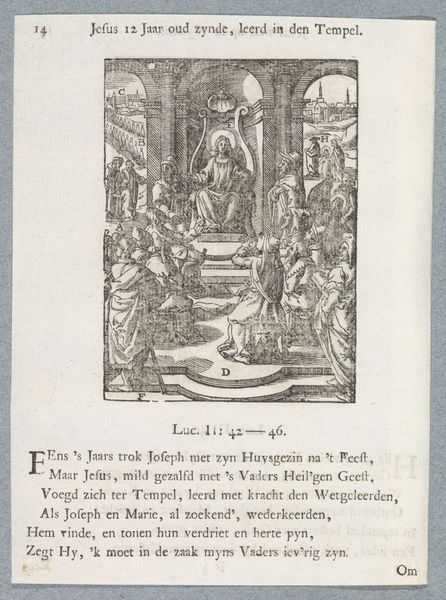
print, engraving
#
narrative-art
#
baroque
# print
#
figuration
#
engraving
Dimensions: height 85 mm, width 66 mm, height 169 mm, width 133 mm
Copyright: Rijks Museum: Open Domain
Curator: Well, this strikes me as rather… intense. Is it just me, or is there a feeling of overwhelming power condensed into such a small space? Editor: That's an excellent observation. What we're looking at is "Baptism of Christ" and its ascribed to Christoffel van Sichem II. Dating anywhere between 1629 and 1740. As you can see, the artist employed printmaking to deliver a highly textured interpretation of this biblical scene. Notice the pronounced contrast between the figures and the background. Curator: Baroque! Of course it's Baroque. Look at that almost aggressive detail, like an Old Master remix by a particularly excitable ant. Everything fights for your attention. Do you get the feeling they are having a really tense moment, where the destiny is almost suffocating everyone? Editor: I appreciate your dramatic take! The density absolutely contributes to the visual and emotional weight. If we unpack the composition, we can identify some classic formal features of Baroque religious art. Sichem has clearly emphasized diagonal lines to direct the eye, generating movement and heightening drama. Furthermore, if we focus on Christ, note how the open palms mimic Christ's own act, creating almost direct link of communication that serves not only compositional unity but offers as well direct spiritual connection. Curator: A direct spiritual connection... yeah! That feels right, doesn’t it? Not in a calm, meditative way. More like, “You. There. Listen. Now.” Which, for a divine moment, makes perfect sense to me. So, what does it really say that something from so long ago still rouses strong feeling, or a debate about a design? Editor: Indeed, and that's what makes the beauty of the encounter. An artwork like this, examined through the lenses of composition and expression, becomes a really vivid discussion about form and significance. It truly emphasizes how our relationship with a past creates a unique way of knowing ourselves and that, after all, can feel sublime.
Comments
No comments
Be the first to comment and join the conversation on the ultimate creative platform.
